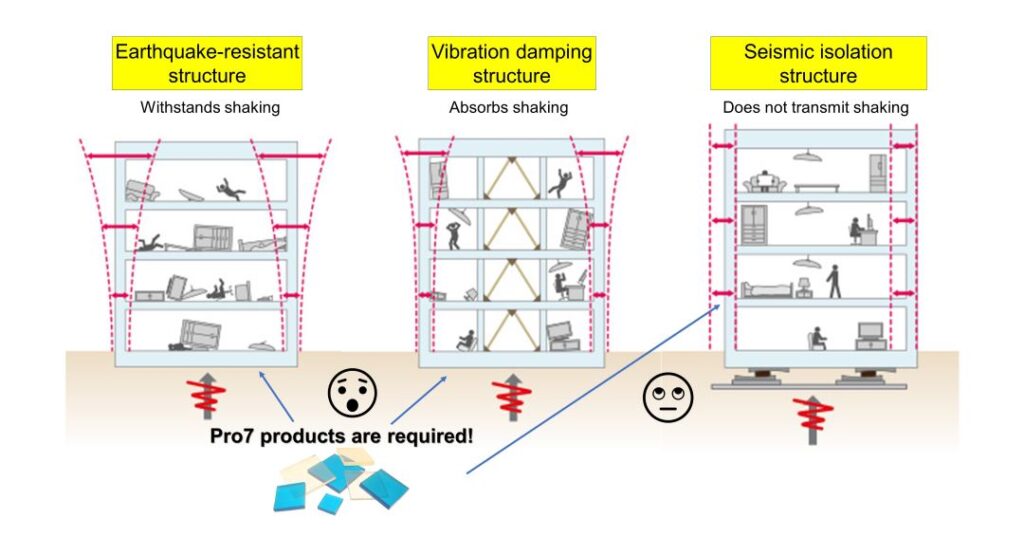
Earthquake-resistant and base-isolated structures are technologies used to reduce damage caused by earthquakes.
Each method transfers the force of an earthquake to the building in a different way to minimize damage.
Earthquake-resistant structure: An earthquake-resistant structure is a structure that is designed to withstand the forces of an earthquake. It is achieved by increasing the strength of the building and by making it more flexible.
Base-isolation structure: Base isolation is a system that protects buildings from earthquakes by isolating them from the ground. This is done by placing the building on a layer of flexible material, such as rubber or lead-core rubber bearings, which absorbs the energy of the earthquake and prevents it from being transmitted to the building.

Pro7: Small size, big impact!!
While both structures can reduce damage to the building itself and mitigate internal damage, there is still a risk of furniture toppling and objects falling, especially on higher floors. It's important to take preventive measures and implement earthquake-proofing for furniture and appliances to minimize indoor damage.
Seismic control structure is a technology that suppresses the shaking of a building caused by an earthquake by absorbing or suppressing vibration energy by installing a vibration control device in the structure of the building.
